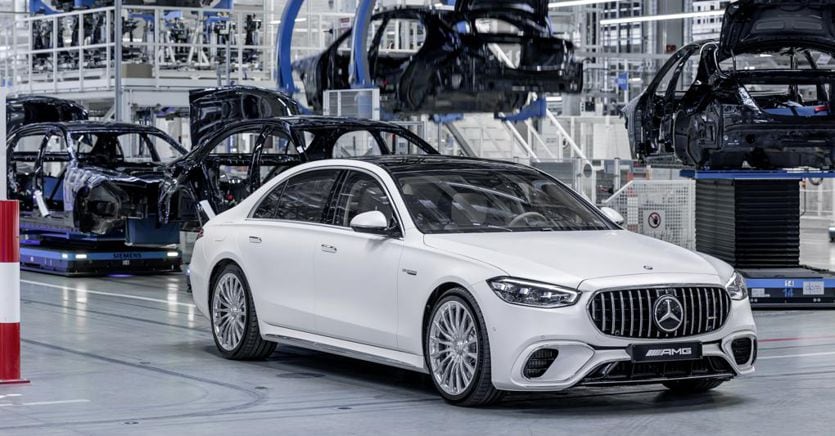Listen to the audio version of the article
A
Inside its oldest industrial complex, Mercedes has created a cutting-edge plant from an industrial and technological point of view
The oldest and largest Mercedes factory in the world dates back to 1915 and is located in Sindelfingen, half an hour from Stuttgart in the German state of Baden-Württemberg. This industrial complex occupies an impressive 3 million square meters, has 35,000 employees, has all types of services (restaurants, gyms, public transport, kindergartens, etc.), and produces something like 240,000 cars a year. Inside it stands one of the most modern and hi-tech factories in the world: Factory 56. Built in 2020, with an investment of more than 700 million euros, it represents excellence from an industrial and technological point of view, thanks to high integration digital and a great attention to sustainability. The most striking element is its flexibility: car factories usually have production lines that hardly allow them to make different models (with the exception of cars that share the same platform), and a change in production requires weeks of downtime. The Factory 56 lines allow any Mercedes, Maybach and AMG model to be assembled without any discontinuity, with any type of engine, transmission or equipment, intended for any country in the world (with right-hand drive and different regulations to be respected) and even to alternate cars with combustion and electric engines as if nothing had happened. The only exception is represented by armored cars (around 200 per year), which are assembled semi-manually in another area of the industrial complex. The degree of automation is impressive: for example, less than 50 seconds are enough to build the bodywork, engine unit and distribution. Robots are used more to help workers than to replace them: the over 400 devices capable of moving autonomously mainly contribute to the movement of the pieces to be assembled, while the large automatic systems make the workers’ work easier, for example by rotating the entire frame so that the operator can operate on the underlying part of the car in an ergonomic manner, or intervene in cases where extreme precision is required such as in the optical reading of tolerances. The entire factory uses high-performance WLAN and 5G networks, is energy independent and already operates neutrally with respect to CO2 emissions. 30% of the demand is covered by 12,000 photovoltaic modules on the roof which provide 5,000 MWp and are connected to a direct current grid, connected to a stationary energy bank based on electric vehicle batteries: with a capacity of 1,400 kWh, it acts as reserve for excess solar energy from the photovoltaic system. All operations are managed by the Mo360 digital platform, developed together with Microsoft, created to make vehicle production more efficient, resilient and sustainable. Mercedes intends, in the coming years, to replicate Factory 56 in all its production centers around the world.
